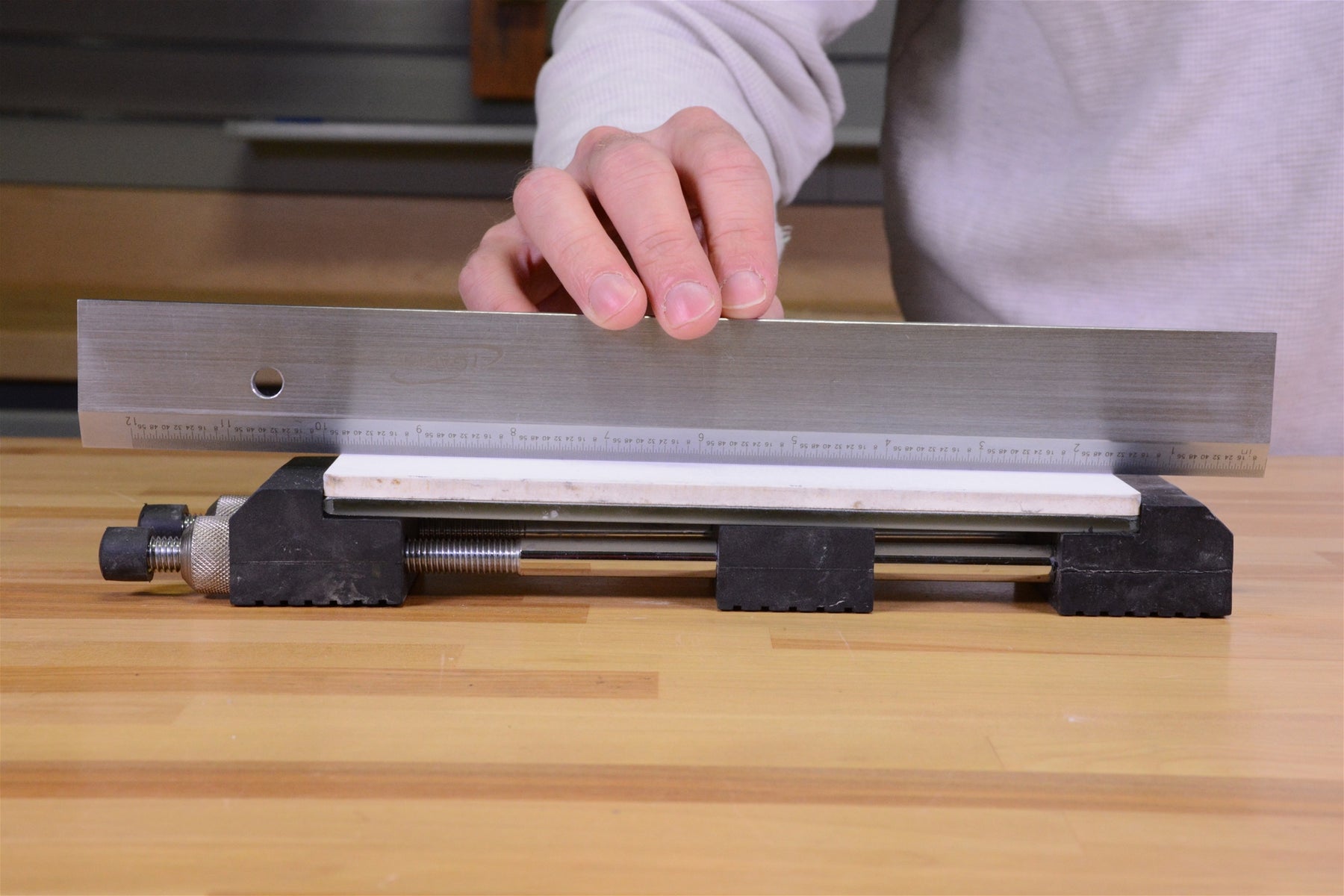Check a Stone with a Straight Edge

Check Sharpening Stone Flatness with a Straight Edge
In my previous post about the 10x Magnifier I promised that I would point out more nifty items to help you get the most out of your sharpening. So this time I'm talking about our Premium Straight Edge. Gadgets don't get much simpler, or more important, than this.
How Flat Are Your Stones?
Having flat stones is vital to good sharpening. Whether you are sharpening a knife, flattening the back of a chisel, or honing a straight razor, you will find that the job is much easier with a stone that is flat. But ascertaining the flatness of a stone isn't necessarily as easy as it sounds. Simply looking at the stone might not be enough. It doesn't take much of a dish to a stone's surface to affect sharpening, and such small deflections can be easy to miss.
A Straight Edge Tells You if the Stone is Flat

So how do you tell? The easiest way is to hold something that you know to be flat against your stone to check. It's that "know to be flat" part that is the kicker. A test for flatness is only as good as the tool used to do the testing. And that's where a Premium Straight Edge comes in. As the name implies, it is an edge that is guaranteed to be straight. Wonderfully simple and simply useful.
Simple to Use
Hold the straight edge against the surface of your stone. Then hold both up to a light. See any light peaking through between stone and straight edge? If you do, the stone is not flat. It really is that simple. And really, that's what makes the best gadgets so cool, they're simple and useful.
Hold it Up to a Light

Holding up your straight edge and stone to a light is the easiest way to see if your stone is out of flat. Even small differences under .005" are easily seen using this method. Using a automotive feeler gauge, you can quantify the amount that your stone is out of flat. However, we feel the feeler gauge step is unnecessary as you'll want to just flatten the stone at that point anyway.

